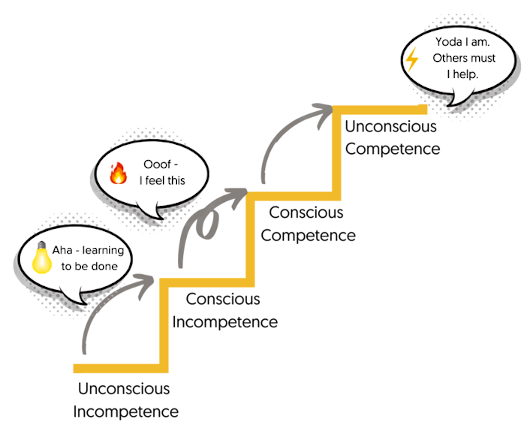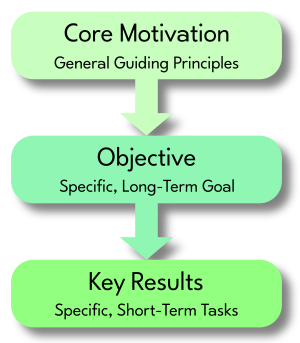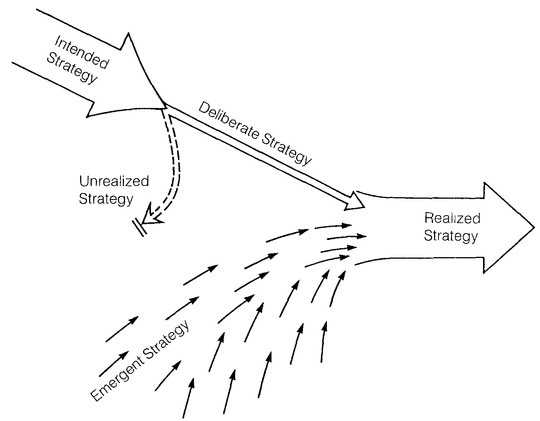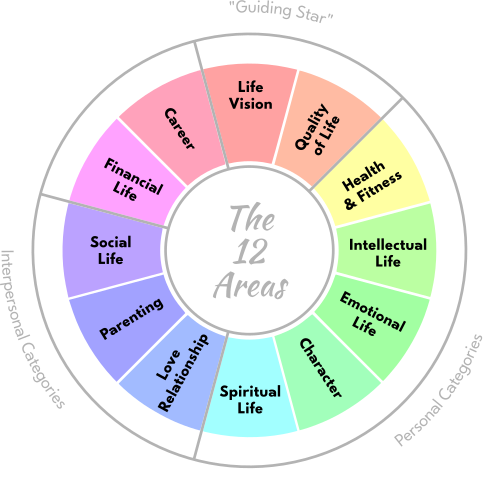

Know Thyself
We've spoken before about avoiding burnout and finding one's purpose, as well as how to handle complex situations. Here, we would like to provide more tools for assessing our state of awareness so as to increase our ability to learn and stay productive.
| Known To Self | Not Known To Self | |
|---|---|---|
| Known To Others | Arena | Blind Spot |
| Not Known To Others | Façade | Unknown |

| Type 1 Error: False Positive | finding a (statistical) relation that isn't real |
| Type 2 Error: False Negative | missing a (statistical) relation that is real |
| Type 3 Error: Tricking Ourselves | Unintentional error of solving wrong problems precisely (through ignorance, faulty education, or unreflective practice) |
| Type 4 Error: Tricking Others | Intentional error of solving wrong problems (through malice, ideology, overzealousness, self-righteousness, wrongdoing) |
The Big Picture
Once we know where we are at, we can then determine where we are going. It helps to start off with the general principles that motivate us. What goals align with them? We can break these goals down into specific actions that will accomplish them. One framework for doing this is known as Objectives and Key Results (or OKRs for short).


Up Close and Personal
Now that we have a general outline, we can tease out some more specific details...
| Definitions | Comments | |
|---|---|---|
| Style 1: Hopper |
"Hopping" is when one constantly moves from one task to another. | Pros: It allows one to adapt their energy level to different kinds of activities (e.g.: doing simple tasks when energy is low, and more involved tasks when energy is high). Cons: It may lead to being easily distracted and leaving many things unfinished. This can be resolved by committing to finish smaller projects. Do not "bite off more than you can chew". |
| Style 2: Perfectionist |
"Perfectionism" is to focus in on details. | Pros: It allows one to be precise. Cons: Some standards are so "high" that they are impossible to reach. If it is not critical (e.g.: a matter of "life or death"), it is okay to relax. Likewise, do not hesitate to ask for assistance when you truly need some help. |
| Style 3: Allergic to Detail |
To be "Allergic to Detail" is to deal with things generally. | Pros: It allows one to get a broad overview of a situation or subject. Cons: Important details can "slip through the cracks". It sometimes stems from impatience and leads to a lack of follow-through. This can be resolved by taking time to consider those details! |
| Style 4: Fence Sitter |
To "Fence Sit" is to carefully deliberate over a choice. | Pros: By taking some time to think before acting, one can keep from making hasty decisions that they might regret later. Cons: Sometimes people never make the decisions that they should, procrastinating by endlessly "hemming and hawing". This can be resolved by narrowing down the options / alternatives, ranking them according to how closely they meet our objectives, and then making a choice. Do not stop short. Sometimes a choice must be made repeatedly before it starts to "bear fruit". |
| Style 5: Cliff Hanger |
To "Cliff Hang" is to require outside influence to get a task done. | Pros: Sometimes people can "pull through", pressured into developing methods for handling challenging situations. As the saying goes, "Necessity is the mother of invention." Cons: Rather than put oneself or others under undue stress, develop an awareness of what needs to be taken care of before it cries out for attention. One does not need to make needlessly risky decisions in order to be creative, or sacrifice quality by "waiting until the last minute" to get something done. |
| Definitions | Comments | |
|---|---|---|
| Style 1: Everything Out |
"Everything Out" is having all tools and/or information visible at once. | This can help one to understand what resources are available, but can degrade into chaos. Find ways for everything to be both clean and accessible. |
| Style 2: Nothing Out |
"Nothing Out" is having everything put away in its own space. | Keeping everything put away can maintain order, but can also make a space feel sterile. Give those spaces a decorative touch to make them more inviting. |
| Style 3: Right Angler |
"Right Angling" is compulsive organization, to neatly arrange clutter. | It is good to cultivate a habit of cleanliness, but clean out whatever is no longer necessary. Do not endlessly rearrange. |
| Style 4: Pack Rat |
To act like a "Pack Rat" is to save everything. | Find uses for everything and pass it on when it is no longer being used. Do not keep things perpetually within storage or selfishly hoard items. |
| Style 5: Total Slob |
To act like a "Total Slob" is to put things into total disarray. | Cleaning up after oneself (e.g.: by placing items back in their designated areas after we use them) makes life easier for everyone. Even if we don't live with anyone, a well-organized environment can be conducive to clear thinking. |
A Greater Plan
"Manifestation" seems to be a very popular subject now. This is partly due to the 2006 book/movie The Secret by Rhonda Byrne, but many of the concepts behind it originated within the New Thought Movement that began in the late 1800's [particularly the work of P. P. Quimby about healing the body through the mind]. It mostly revolves around an idea called "The Law of Attraction", which can be summarized by the simple statement:| Virtue | Meaning |
|---|---|
| Temperance | Franklin's Original Definition: "Eat not to dullness; drink not to elevation." Modern English Version: Do not overeat or get drunk. [To which I would add, "Create well-balanced, nutritious meals."] |
| Silence | Franklin's Original Definition: "Speak not but what may benefit others or yourself; avoid trifling conversation." Modern English Version: Use your words to enrich people's lives. Do not gossip or speak carelessly. |
| Order | Franklin's Original Definition: "Let all your things have their places; let each part of your business have its time." Modern English Version: Manage both your space and your time well. |
| Resolution | Franklin's Original Definition: "Resolve to perform what you ought; perform without fail what you resolve." Modern English Version: Handle your responsibilities. Align words with actions and follow-through. |
| Frugality | Franklin's Original Definition: "Make no expense but to do good to others or yourself; i.e., waste nothing." Modern English Version: Do not live outside of your means and always share what you have. Repair and repurpose rather than throw away. |
| Industry | Franklin's Original Definition: "Lose no time; be always employ'd in something useful; cut off all unnecessary actions." Modern English Version: There is no such thing as "boredom". Use time wisely, efficiently. |
| Sincerity | Franklin's Original Definition: "Use no hurtful deceit; think innocently and justly, and, if you speak, speak accordingly." Modern English Version: Be honest, yet tactful. Treat others with genuine kindness. |
| Justice | Franklin's Original Definition: "Wrong none by doing injuries, or omitting the benefits that are your duty." Modern English Version: Maximize life and minimize harm as much as possible with each decision. Do not withhold peace or mercy. |
| Moderation | Franklin's Original Definition: "Avoid extreams; forbear resenting injuries so much as you think they deserve." Modern English Version: Not everything requires intensity. Do not hold grudges or allow "bad feelings" to fester. |
| Cleanliness | Franklin's Original Definition: "Tolerate no uncleanliness in body, cloaths, or habitation." Modern English Version: Keep your body, clothes, and living space clean. |
| Tranquillity | Franklin's Original Definition: "Be not disturbed at trifles, or at accidents common or unavoidable." Modern English Version: Keep calm, especially when it comes to minor inconveniences. Be forgiving of mistakes. |
| Chastity | Franklin's Original Definition: "Rarely use venery but for health or offspring, never to dullness, weakness, or the injury of your own or another's peace or reputation." Modern English Version: Keep sexuality consensual, pleasurable, and private. It should not hurt you or the person with whom it is shared. |
| Humility | Franklin's Original Definition: "Imitate Jesus and Socrates." Modern English Version: Always try to serve others. No amount of "knowledge", "wealth", etc. should make one arrogant. |

| deficit | BALANCE | excess |
|---|---|---|

Conclusion
We've formulated a general plan for our lives, figured out how to implement it in detail, and aligned it with potentials greater than ourselves alone. We hope that this resource was helpful to you and continues to be into the future.